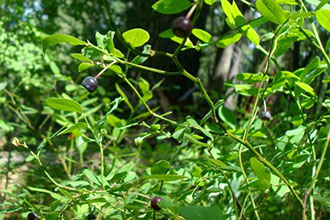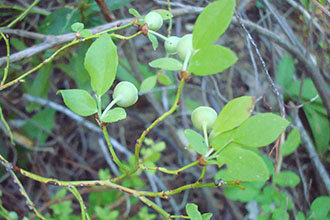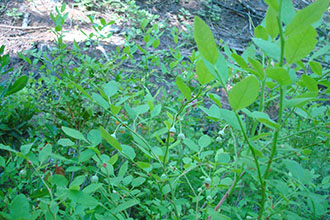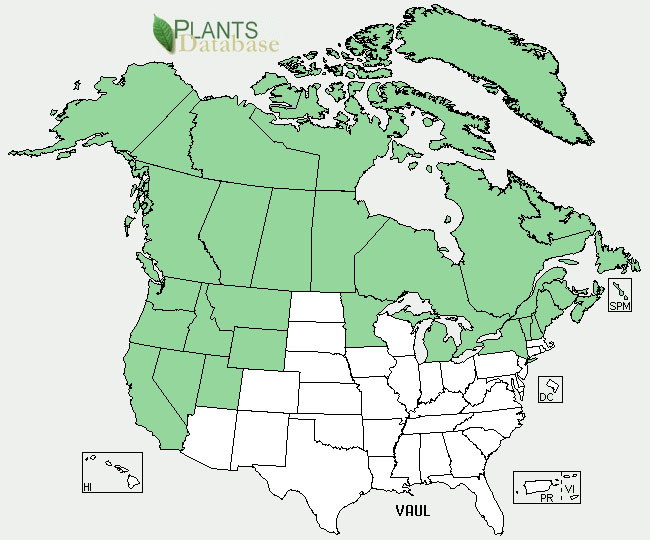Taxonomy: Kingdom - Plantae (plants). Subkingdom - Tracheobionta (vascular plants). Superdivision - Spermatophyta (seed plants). Division - Magnoliophyta (flowering plants). Class - Magnoliopsida (dicotyledons). Subclass - Dilleniidae. Order - Ericales. Family - Ericaceae (heath). Genus - Vaccinium L. Species -Vaccinium uliginosum L.
Ecology: Bog blueberry remains an important component of forest and woodland understory through the early, mid-seral, and late stages of succession. It is important in the early shrub stages of tundra succession, as well as in climax stages. Bog blueberry can also be found in dense, mature-climax forest stands. Bog blueberry can sprout from underground plant parts following fire and remains important throughout successional stages. Mycorrhizal associations exist on bog blueberry roots that allow for increased plant nitrogen levels. These adaptations are important for nutrient uptake in the cold, poorly aerated, nitrogen-poor soils characteristic of bog blueberry sites.



